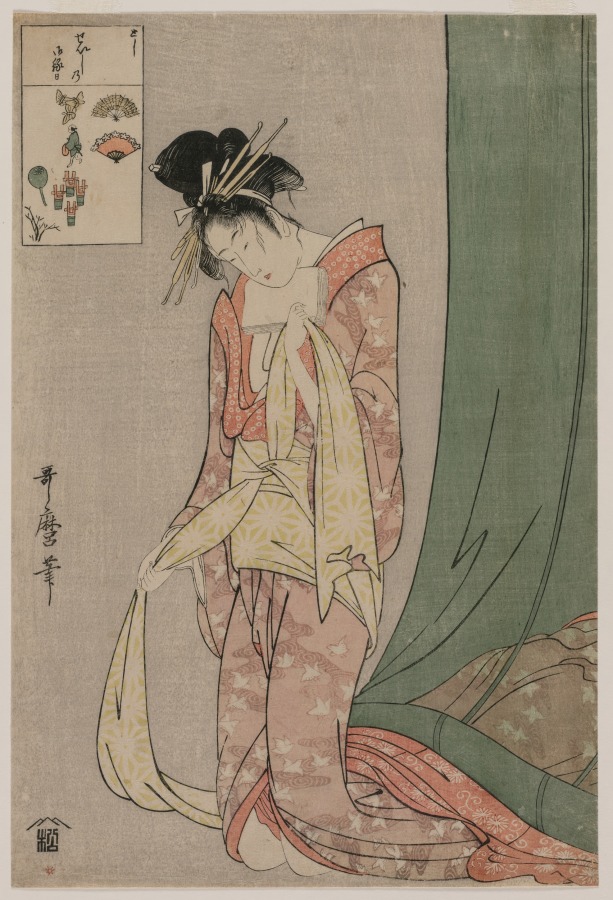| schema:description 12 | "inscription: Signature: Utamaro hitsu
Publisher: Matsumuraya Yahei (emblem)" |
| schema:description | "wall_description: Utamaro’s favorite subject matter was beautiful women. He often depicted them engaged in simple, everyday activities. Hanaogi was one of the most famous courtesans of the equally famous Ogiya geisha house in the Yoshiwara district of Edo (now Tokyo), popular during the 1790s. In this tricky print, one must decode the small pictures in the rectangle at the upper left corner to learn the identity of the subject of the print: a woman whose name means “Flower Fan,” her place of work called the “House of Fans,” and what she is doing—emerging from a mosquito net....(more)" |
| schema:description | "culture: Japan, Edo Period (1615-1868)" |
| schema:description | "tombstone: Hanaōgi of Ōgiya from the series Picture Puzzles, c. 1797. Kitagawa Utamaro (Japanese, 1753?-1806). Color woodblock print; ink and color on paper; sheet: 37.6 x 25.4 cm (14 13/16 x 10 in.). The Cleveland Museum of Art, The Kelvin Smith Collection, given by Mrs. Kelvin Smith 1985.359...(more)" |
| schema:description | "inscription: Collector's Seal: Vever" |
| schema:description | "measurements: Sheet: 37.6 x 25.4 cm (14 13/16 x 10 in.)" |
| schema:description | "type: Print" |
| schema:description | "digital_description: In this tricky print, one must decode the small pictures in the rectangle at the upper left corner to learn the identity of the subject of the print: a woman whose name means "Flower Fan," her place of work called the "House of Fans," and what she is doing—emerging from a mosquito net....(more)" |
| schema:description | "id: 152542" |
| schema:description | "creditline: The Kelvin Smith Collection, given by Mrs. Kelvin Smith" |
| schema:description | "technique: Color woodblock print; ink and color on paper" |
| schema:description | "collection: Japanese Art" |

